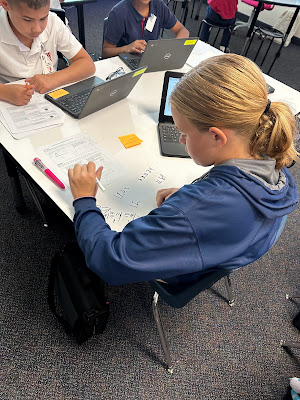The physical and virtual environments where learning takes place play a pivotal role in shaping the effectiveness and depth of personalized learning strategies. Consider for a moment the impact of the physical classroom. It is not merely a backdrop but an active participant in the learning journey. The arrangement of desks, the presence of collaborative spaces, and the infusion of technology all contribute to the atmosphere that shapes a student's educational experience. As you delve into personalized learning, the importance of tailoring these spaces to accommodate diverse learning needs becomes increasingly evident.
Research consistently underscores the profound impact of physical and virtual learning environments on educational outcomes. According to a study by Tanner and Lackney (2006), the design of physical spaces significantly influences student engagement and academic performance. Flexible seating arrangements, varied learning zones, and interactive elements have been found to correlate positively with increased student motivation and collaboration (Tanner & Lackney, 2006). Furthermore, research by Hattie (2012) emphasizes the importance of creating a positive classroom climate, asserting that the physical layout plays a crucial role in fostering a conducive atmosphere for learning. The influence of virtual learning environments cannot be ignored either. A Means et al. (2013) meta-analysis highlighted the importance of well-designed online platforms, emphasizing their impact on student achievement and satisfaction. As the digital landscape continues to evolve, understanding and optimizing physical and virtual learning spaces is paramount for educational success (Means et al., 2013; Hattie, 2012; Tanner & Lackney, 2006).
Physical Learning Spaces
The traditional classroom setup, with rows of desks facing forward, may not be the most conducive environment for personalized learning. Flexible seating arrangements, breakout spaces, and interactive learning corners empower students to take control of their learning. Recognizing that each student is unique, physical spaces can be designed to cater to various learning preferences, whether it be quiet individual study, collaborative group work, or hands-on experimentation.
Virtual Learning Environments
In our digital age, the concept of place extends beyond physical boundaries. Virtual learning environments, online platforms, and educational apps contribute to the personalized learning ecosystem. The design of these digital spaces, from user interface to interactive features, can significantly influence the engagement and success of personalized learning initiatives. Thoughtful consideration must be given to user experience and accessibility, ensuring the virtual place complements and enhances the learning process.
Outdoor Areas
The importance of outdoor spaces for learning cannot be overstated, as they offer a transformative and holistic dimension to education. Beyond the traditional confines of classrooms, the outdoors provides a dynamic setting that stimulates curiosity, creativity, and a sense of exploration. Nature becomes a powerful teacher, offering biology, ecology, and environmental science lessons in a living laboratory. Beyond academic subjects, outdoor spaces promote physical activity, contributing to students' overall well-being. The fresh air and natural light create an invigorating atmosphere, fostering focus and reducing stress. Moreover, outdoor environments encourage collaboration, teamwork, and social skills as students engage in activities that often require cooperation and communication. By integrating outdoor spaces into the learning experience, educators enrich the academic curriculum and cultivate a love for the environment and a deeper connection to the world around us.

Below are some specific strategies for crafting effective learning spaces:
- Individualized Learning Zones: Break down traditional classroom barriers by creating individualized learning zones. Each student can have a designated space that aligns with their preferred learning style, whether a quiet corner for reflection or an interactive area for hands-on exploration.
- Technology Integration: Leverage technology to bridge the physical and virtual learning spaces. Interactive whiteboards, digital collaboration tools, and online resources can seamlessly integrate into the classroom, providing a dynamic and personalized learning experience.
- Flexible Furniture: The days of static desks and chairs are behind us. Embrace flexible furniture that can be easily rearranged to accommodate different learning activities. This adaptability promotes a sense of ownership over the learning environment.
- Makerspaces: When I hired Laura Fleming in 2012, I asked her to transform the library into a place where kids not only wanted to read but could also serve as a catalyst for personalization. She did all that and more by creating a makerspace that became revered by our students and educators across the globe. It was a place for learners to collaborate, hack, invent, share, create, make, and do, which is the epitome of personalization. They were given all the tools needed to get started, but where it went was up to them. Learn more about makerspaces HERE.
- Student-Centric Design: Involve students in the design process. Solicit their input on the classroom layout, the choice of furniture, and technology integration. A student-centric approach ensures that the learning space truly resonates with its inhabitants.
As you embark on the personalized learning journey, consider the impact of place. The physical, outdoor, and virtual environments in which learning unfolds are not passive backdrops but active participants in the educational process. By strategically crafting these spaces to align with the diverse needs of learners, we can amplify the effectiveness of personalized learning initiatives. The power of place extends beyond the confines of walls and screens; it is a dynamic force shaping the essence of how we learn and grow.
Hattie, J. (2012). Visible learning for teachers: Maximizing impact on learning. Routledge.
Means, B., Toyama, Y., Murphy, R., & Baki, M. (2013). The effectiveness of online and blended learning: A meta-analysis of the empirical literature. Teachers College Record, 115(3), 1-47.
Tanner, C. K., & Lackney, J. A. (2006). Approaches to learning space design. Planning for Higher Education, 34(3), 35-50.
























